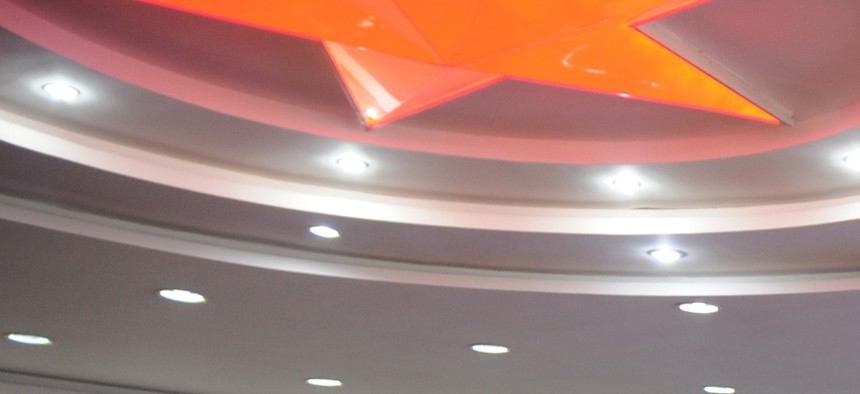
The U.S. Army Pacific and People's Liberation Army participate in a Joint Humanitarian and Disaster Relief Tabletop Exercise. U.S. Army Pacific Public Affairs Office
A Funny Thing Happened When These Military Officers and Academics Got Together
The officers were intimidated by the fancy degrees and four-star friends. The scholars were intimidated by the uniforms, medals and deployments. Here’s how they learned to trust each other.
When commentators talk about the civilian-military divide, they often mention the dwindling number of Americans who serve in uniform, the high costs of sustaining an all-volunteer force, and the myriad stories of senior military officers who act as though they are beyond civilian control. Another facet of the problem is the mutual opacity of two influential communities that should have much to offer each other: military officers and civilian academics.
If senior officers and academics find themselves divided, is there a way to build respect and trust earlier in their careers, when less is at stake and time a bit more abundant? With support from the Stanton Foundation, RAND recently explored one modest possibility: a tabletop exercise that brought future leaders together.
The exercise presented a contemporary geopolitical problem that might require a military solution. It brought together an accomplished group of field grade military officers (lieutenant colonels, colonels and Navy captains) and emerging academic and policy experts at the assistant professor or postdoctoral levels. The scenario, designed to require both civilian and military expertise, ensured that neither group had all the answers.
As the scenario unfolded over two days, it revealed something very human: before the civilian-military divide can be bridged, personal doubts need to be quieted.
Civilian academics confessed to being unsettled at times by those in uniform. To them, military members might have remarkable life experiences; they wear medals and colored ribbons; and they appear aloof, even intimidating, in their uniforms.
But their military counterparts were no less unsettled by the academics, who possessed prestigious advanced degrees, had been awarded impressive fellowships, and had notable connections in the national defense policy circles. Indeed, some had had worked closely with icons of the national security world whom the military members knew only by reputation.
When the group was assembled and asked to address a geopolitical problem, the academic and military players quickly realized they needed each other. The military brought the ability to disaggregate a big problem into manageable pieces; look at different options to address them; and dive into the details of implementing one of the options. This greatly impressed the academics. Moreover, the civilians learned about the personnel and logistics limitations of pursuing various military options.
Similarly, civilian insights proved equally invaluable. The military participants realized the limitations of their understanding of the best way to think about critical concepts such as deterrence, escalation and crisis management and how best to use military resources to prevent a conflict.
After the exercise, while the players’ actions were being evaluated, something simple yet powerful happened. Civilian participants asked military players about their uniforms and associated accouterments. Among other things, this facilitated questions about past deployments, future ship assignments, and overseas tours in peace and war. In return, the military participants asked about their cutting-edge, interdisciplinary research. This simple gesture started a conversation based on mutual respect. It seemed a small, unplanned yet instrumental step in bridging the civilian-military divide.
In fact, this tabletop exercise suggested that the best way to bridge the civilian-military divide, especially at the senior levels of government, is not via large conferences or formal papers. Instead, it can be done by building trust, one person at a time, over time.
This exercise suggests, first, the importance of building personal relationships earlier in a career. If this is left until they are full professors, general officers or assistant secretaries of defense, it is too late; they will have less time to learn and will tend to be more certain in their views. Second, it highlighted the importance of a safe learning environment where ignorance can be disclosed, questions asked and mistakes made. This can be done intensely through an immersion process over the course of a few days, but it requires personal, professional and intellectual commitment. And third, it revealed the importance of informal conversations based on mutual respect during the inevitable down times of a tabletop exercise. Trust and reliance seemed to follow in short order.
The limitations to this approach are important to note. It is built around small groups; it is labor intensive; and it requires civilian and military participants to devote some of their valuable professional time to it. But even with these limitations the effort is worthwhile. National defense is a team endeavor; it requires the trust, devotion, and expertise of military and civilian leaders at many levels to make it work.




